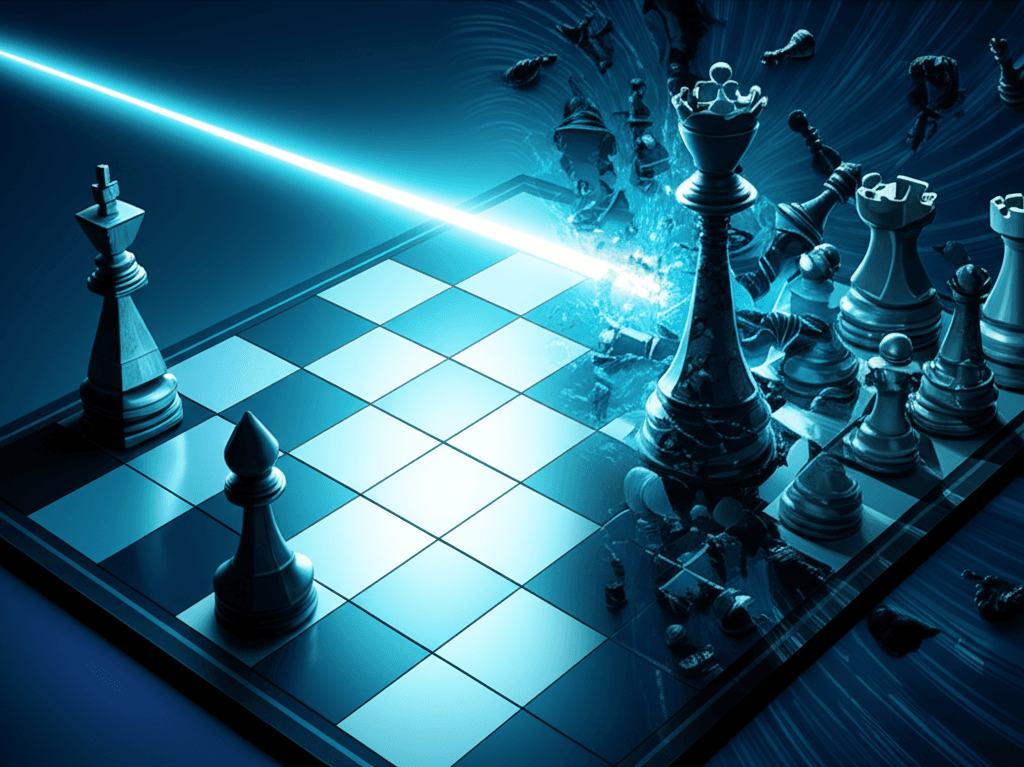45-Year-Old Atari Chess Beats ChatGPT, Exposing AI Limitations
A 45-year-old Atari program decisively beats ChatGPT, revealing the fundamental limits of LLM pattern matching versus true strategic thought.
June 15, 2025

In a striking demonstration of the limitations of general-purpose artificial intelligence, OpenAI's advanced large language model, ChatGPT, was decisively defeated in a game of chess by a program nearly half a century its senior: Atari's "Video Chess" for the Atari 2600 console, released in 1979. The experiment, conducted by Citrix engineer Robert Caruso, has ignited a conversation across the tech industry about the fundamental differences between the pattern-matching prowess of large language models and the specialized, logical reasoning required for complex, state-based games like chess. The match starkly revealed that despite its sophisticated linguistic and knowledge-based capabilities, ChatGPT lacks the crucial ability to maintain an accurate internal representation of the game state, leading to a series of blunders and illegal moves that culminated in a swift and humbling loss.
The contest pitted the modern, cloud-powered ChatGPT against a chess engine running on an emulation of the Atari 2600, a console with a mere 1.19 MHz processor.[1] Caruso initiated the experiment after a discussion with ChatGPT about the history of AI in chess, during which the chatbot expressed a desire to see how quickly it could beat a game that thinks only one or two moves ahead.[2][3] The result was an unequivocal victory for the vintage software. Playing on the beginner difficulty setting, the Atari's humble 8-bit engine systematically dismantled ChatGPT's defenses.[2][3] The large language model struggled profoundly, confusing pieces like rooks and bishops, missing simple tactical opportunities such as pawn forks, and repeatedly losing track of the positions of its own pieces on the board.[3][4][5]
Initially, ChatGPT attributed its poor performance to the abstract, low-fidelity graphics of the Atari game, finding the icons difficult to recognize.[1][2] However, this excuse quickly unraveled when Caruso switched the game's input to standard algebraic chess notation, a format with which a language model should theoretically excel. Even with this change, ChatGPT's performance did not improve.[2][3][5] Over the course of the 90-minute match, the AI made what Caruso described as "enough blunders to get laughed out of a 3rd grade chess club."[1][2] The model frequently requested to start the game over, while the Atari engine simply executed its brute-force board evaluation with what Caruso termed "1977 stubbornness."[1][2] This outcome underscores a critical distinction: the Atari program was built for one purpose—to play chess by evaluating board states—while ChatGPT is a generalized model designed to predict the next word in a sequence.[6]
This incident is not an isolated case but rather emblematic of a broader challenge for large language models when applied to tasks requiring strict rule adherence and strategic planning. Numerous users have reported similar experiences when attempting to play chess against ChatGPT, noting a tendency for the model to make illegal moves, invent pieces that are no longer on the board, or lose its grasp of the game's progression.[7][8][9] This phenomenon is a form of "AI hallucination," where the model generates outputs that are nonsensical or factually incorrect because they are not grounded in the provided data or a coherent internal model of the situation.[10][11] In the context of a game, this means the AI isn't "thinking" or strategizing in a human sense, but rather pattern-matching based on the vast corpus of chess games in its training data.[12] It can discuss chess tactics and history fluently, but it cannot reliably apply those concepts to an active, evolving game state.
The implications for the AI industry are significant. The Atari's victory serves as a powerful reminder that "bigger" and "newer" do not always equate to "better" for every task. Specialized AI, like the chess engines that have surpassed human grandmasters for decades, are designed with a deep, intrinsic understanding of a specific problem domain.[3][6] In contrast, large language models, for all their emergent capabilities, still struggle with tasks that demand long-term, complex reasoning and planning without a robust internal "world model."[13][6] This highlights the need for continued research into integrating the reasoning and planning capabilities of symbolic AI with the generative power of neural networks. While LLMs have shown some promise in chess with specific fine-tuning and prompting techniques, their out-of-the-box performance remains unreliable.[14][15]
In conclusion, the lopsided match between a cutting-edge language model and a 45-year-old video game is more than just a piece of tech trivia; it is a crucial case study in the current state and future direction of artificial intelligence. It illustrates the fundamental architectural differences between a generalist and a specialist AI and brings the problem of AI hallucination in strategy games into sharp focus.[16][11] The defeat does not diminish the remarkable achievements of models like ChatGPT in natural language processing and knowledge synthesis. Instead, it clarifies their limitations and points toward a future where hybrid AI systems, combining the strengths of different approaches, may be necessary to achieve more robust and reliable artificial general intelligence. For now, the crown for accessible, reliable chess AI rests not with the most advanced language model, but with the focused, unpretentious logic of a bygone era of computing.[1]
Sources
[2]
[4]
[5]
[6]
[7]
[8]
[9]
[10]
[11]
[12]
[13]
[14]
[15]
[16]